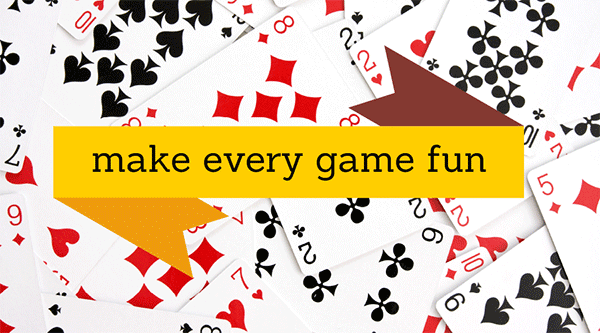
Games are supposed to be fun. But making a game fun, fair, and meaningful takes skill. There’s more to a great game night, for example, than just clearing the table and trotting out a couple of boxes.
Whether you’re a D6-throwing, Catan-settling, Ticket-to-Ride-issuing guru of gaming, or are looking to add some razzmatazz to a review session at work with a game-show quiz, heeding a few simple principles can set the right tone, getting your players excited before they’ve even taken their first turn.
1. Start With, “The Object of This Game Is…”
The first words out of your mouth when explaining a game should be, “The object of this game is…” It’s like “Once upon a time” or “Roses are red, violets are blue.” If the object of the game is to score the most points, great; so be it. The object doesn’t have to be complicated. Indeed, simple is good.
Don’t start by explaining what a knight can do and how you can upgrade your sword and how to pass a skill check. Start with the object of the game. Then the players know everything they do will take them closer to or farther from that goal. Which brings us to…
2. Outline the Choices
A good game is made of a series of interesting choices. Explain to the players what choices they will face in the game; often this will sound like, “When it’s your turn, you can do one of three things.” No need to get into vast detail; briefly sum up the pros and cons of the choices.
(There is an exception to this rule: Candyland, which is a foregone conclusion before it starts based on the order of the cards in the deck. But that game is mostly about teaching kids about taking turns and winning and losing graciously.)
3. Avoid “Gotcha” Rules
If the game you’re playing is one you’re already familiar with, and if there’s one rule that is particularly tricky that regularly trips people up, make sure you’ve explained it ahead of time—even if it means the players might not fully grasp what you’re saying initially.
What you want to avoid is this: 15 minutes into the game, a player makes a move they think is great only to have you say, “I forgot to tell you, you can’t do that.” People hate that.

Having fun with the pizza-box-flipping game Flipperoni Pizza
4. Remember That All Games Are Hands-On Learning Activities
Whatever the game is about, have the players do that first. If the game is about flipping over pizza boxes, have them actually do it while you’re explaining it. Some people are auditory learners and some people are visual learners, but whatever the main action of the game comprises, you should have the players actually do it right away so they can get started, make early mistakes, and build proficiency.
5. Value Good Sportsmanship Above All
As host, the players look to you to set the tone. Win and lose graciously; forgive first time players who make rookie mistakes, or take their hand off the piece and then ask for a do-over. Everyone you’re playing with has the potential to be a lifelong play buddy if you treat them right. Be a good sport. After all, it’s only a game.
You can put these tips into practice on Saturday, March 28, at a free Family Festival that’s turning the entire Getty Center into a giant playground. I’ll be running a multi-player game of Twister, a competition to be the best pickpocket, and (yes really!) a food fight with real produce and a Swedish chef.
Text of this post © Myles Nye. All rights reserved.




Comments on this post are now closed.